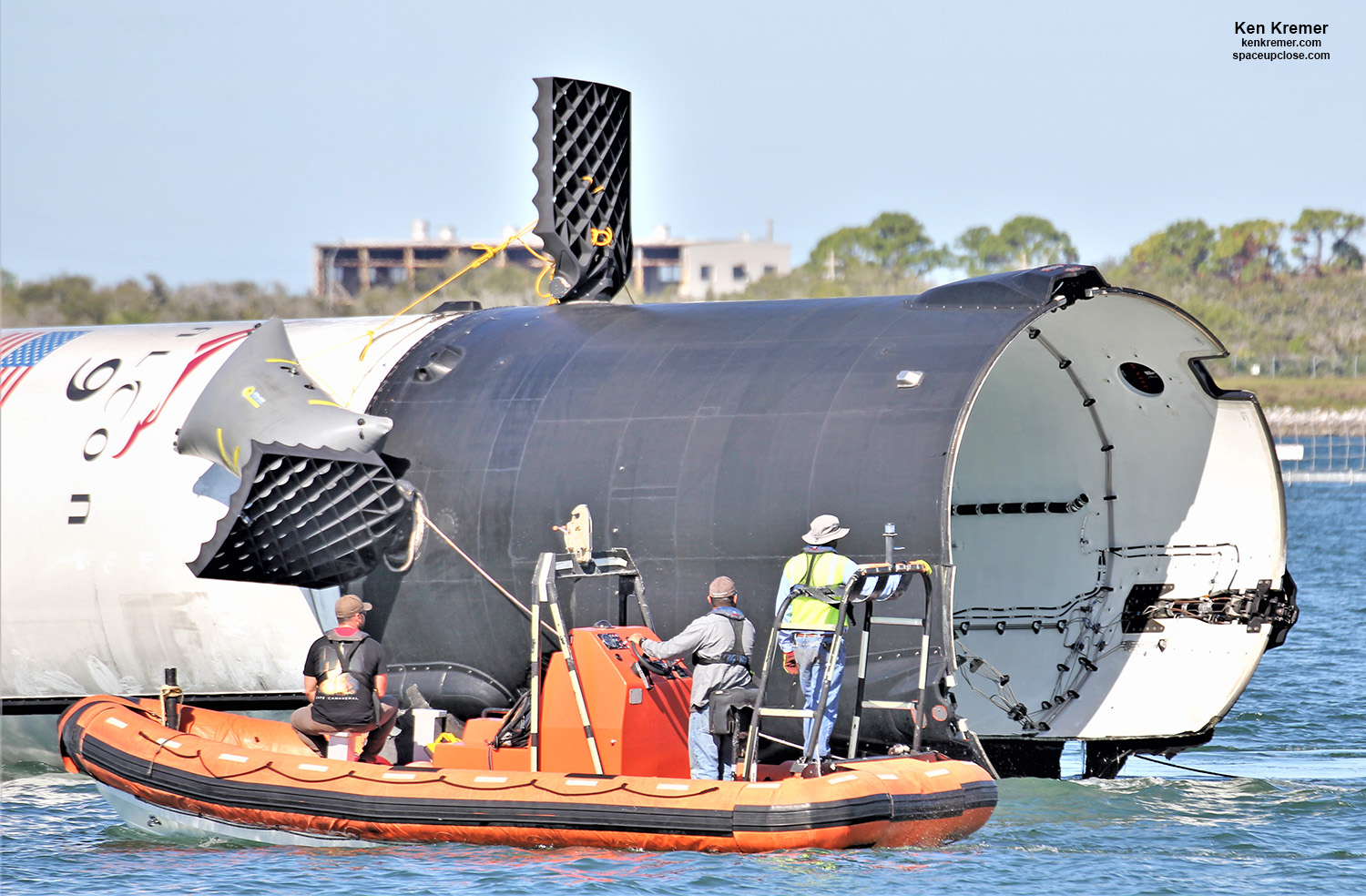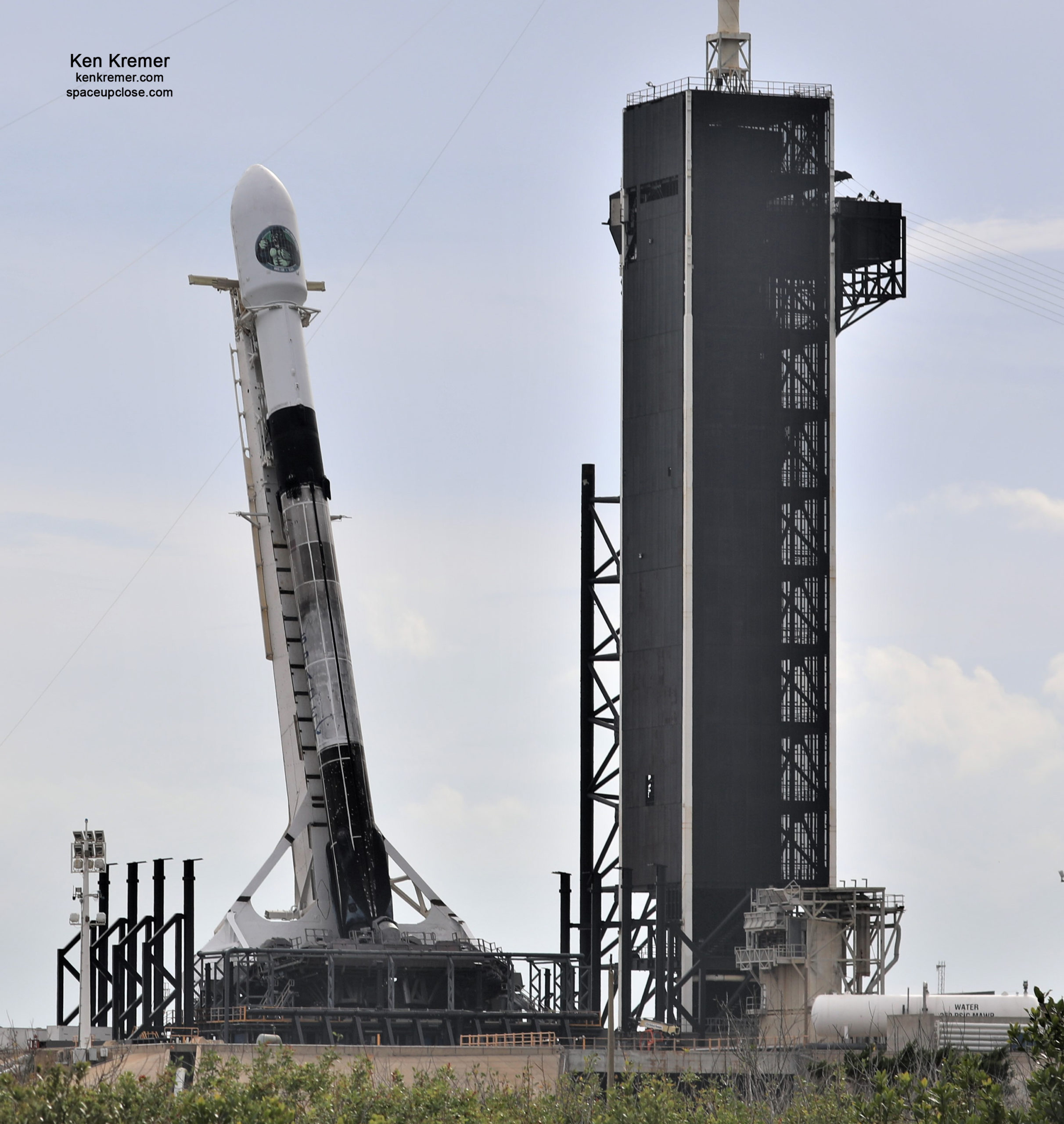
It was created by Anubis space on YouTube. Iy also deploys parachutes during reentry to maintain stability and increase drag (in the game, this works, but in real life no explanation for how this would be done) after which it would use parachutes to recover. The second stage is capable of doing several burns, allowing the Falcon 9 to put payloads in several different orbits. It contains a singular MVacD engine that produces 992 kN of thrust and an ISP of 348 seconds. It would then rotate the fairings to protect the stage during reentry and hold it in place. The Falcon 9 second stage is the only expendable part of the Falcon 9.

From the image to the left, it seems that this proposal would use arms on the second stage to open the fairings to release the payload while still keeping them attached. This is (in my opinion) the most kerbal of these designs. This version would use fairings to shield the second stage during reentry. Perhaps this design will be used on another rocket in the future.

The other proposals while impressive would require massive changes to the second stage and in ground infrastructure. This is the most feasible design as it would be much easier to integrate into the current Falcon 9 system as the payload fairings would not be needed to change, and minimal changes to the second stage. This design coats the second stage as is with an ablative heat shield and adds landing legs and a smaller bell/engine. After delivering 72 spacecraft to orbit, Falcon 9 returns to Earth and completes SpaceXs 200th landing of an orbital. The proposal for a reusable second stage that does not incorporate the fairings. A single Merlin Vacuum engine powers Falcon 9’s second-stage using a 165:1 expansion nozzle (large exhaust section and significantly larger nozzle to maximize efficiency in space vacuum) and can be restarted multiple times using dual redundant triethylaluminum-triethylborane pyrophoric igniters to. The craft file and original images can be found here and at the bottom of the page under Sources. Falcon 9 rocket has completed a total of 83 launches, 44 landings, and 31 re-flow missions. It was created in the game SimpleRockets 2 by user VILLTAREYA. It was designed by Anej Kostrevc who first posted it on his blog here, where is gained attention. Since SpaceX plans to replace the Falcon 9 with Starship, which is slated for its first operational flights in the mid-2020s, it is unlikely SpaceX would go to such trouble for something that be used only a few years. This version of an RF9SS would require immense infrastructure changes to support the new shape of the engines, fairings and stage in general. This is very similar to the Mechazilla Starship-catching tower in Starbase, TX in construction by SpaceX. It has no landing legs to save weight and instead would make "a precision landing on a special platform that can safely catch the vehicle" (Original design concept source below). This version would also have incorporated fairings. This one completely redesigns the second stage to use a cluster of SuperDraco engines and ablative heat shield similar to the dragon spacecraft.

The Dragon-inspired design recreated in the game SimpleRockets 2. 1.1 Dragon-inspired Second Stage Vehicleĭesigns Dragon-inspired Second Stage Vehicle.


 0 kommentar(er)
0 kommentar(er)
